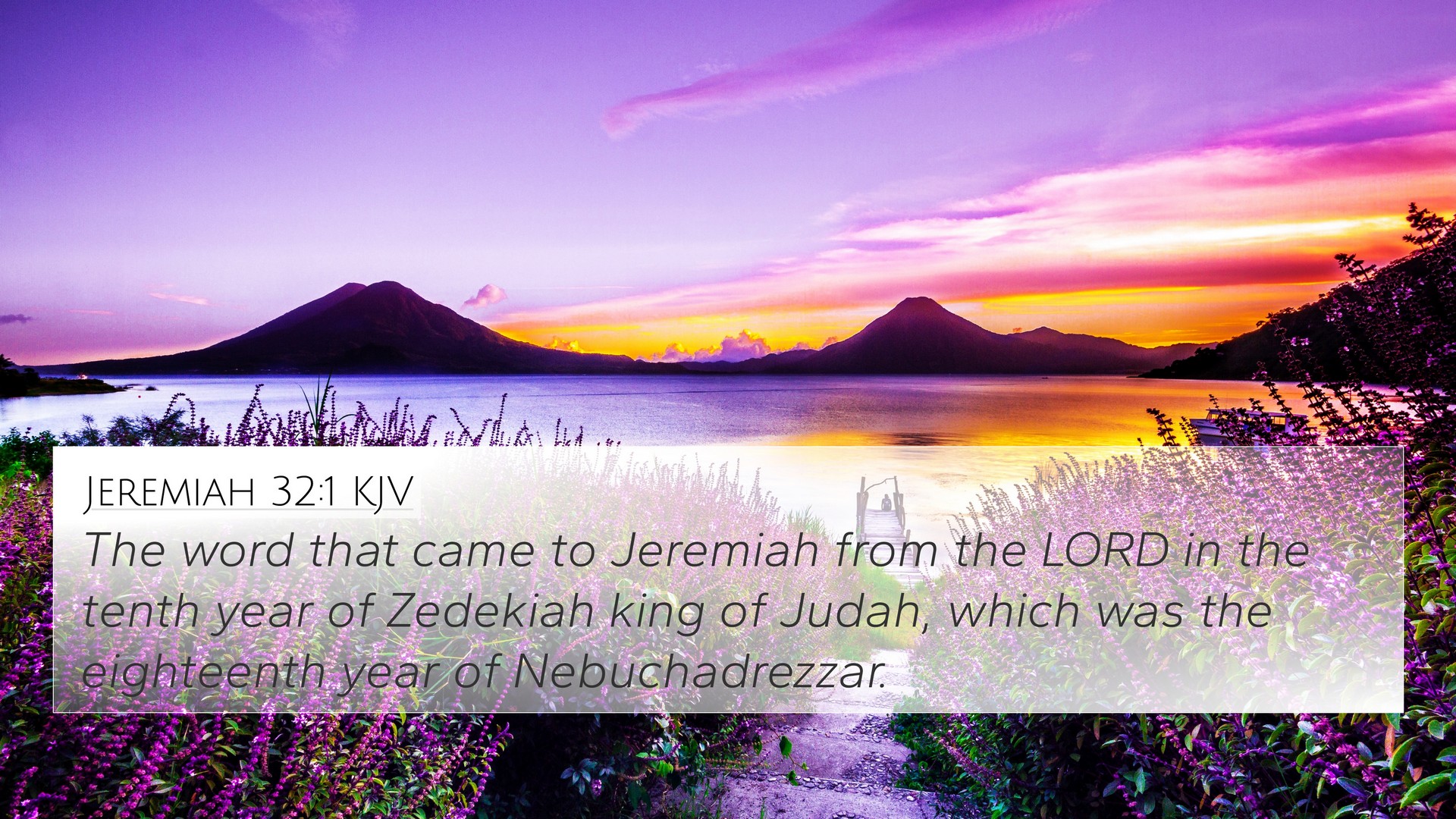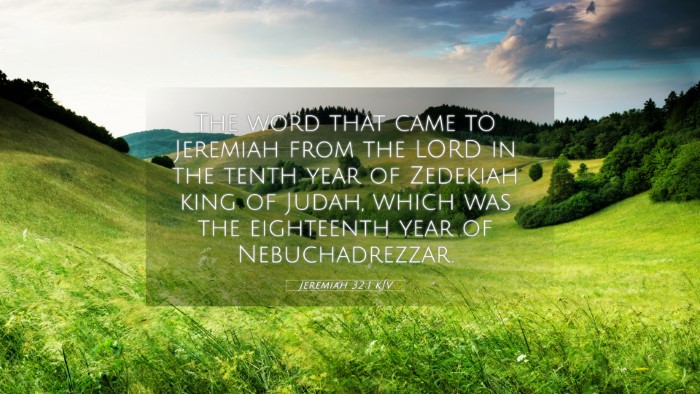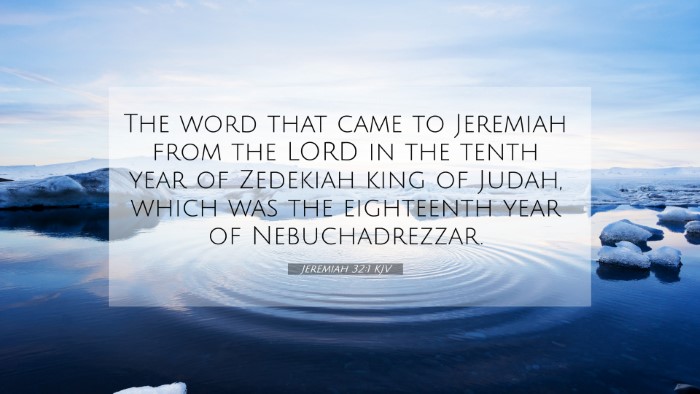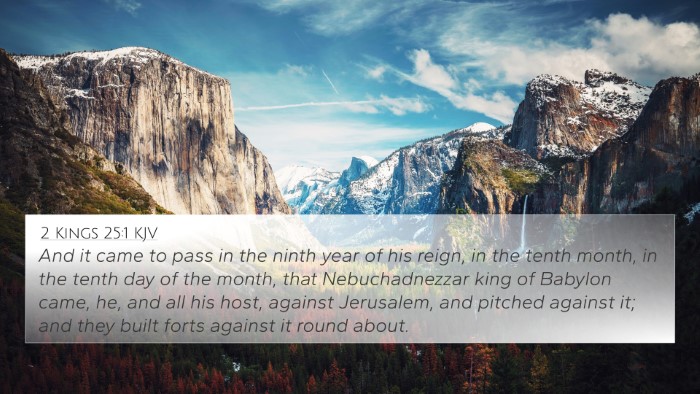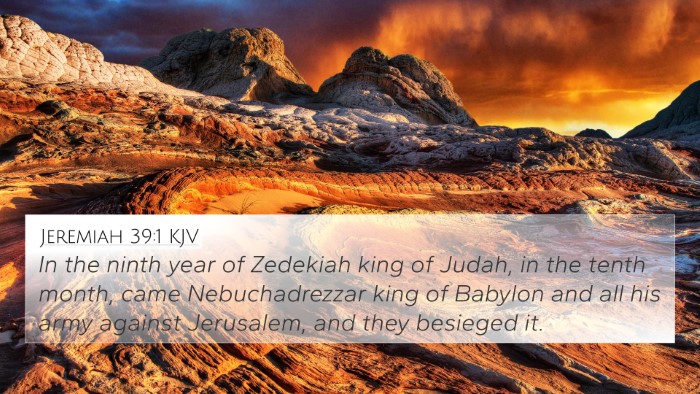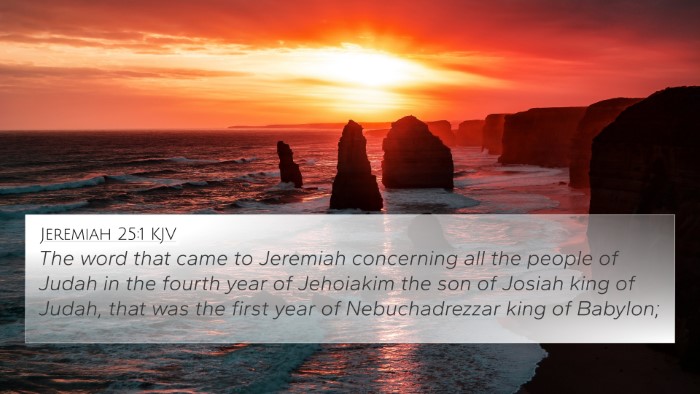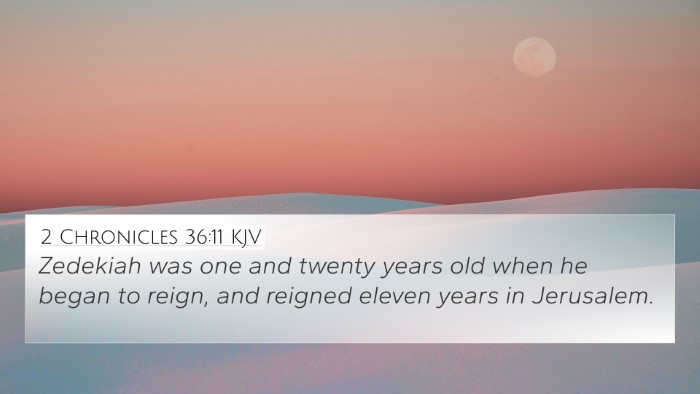Understanding Jeremiah 32:1
Jeremiah 32:1 states:
"The word that came to Jeremiah from the Lord in the tenth year of Zedekiah king of Judah, which was the eighteenth year of Nebuchadnezzar."
This verse marks a significant moment in the life of the prophet Jeremiah, highlighting the divine communication he receives during a critical period in the history of Israel. Below is a summarized interpretation that takes insights from various public domain commentaries.
Contextual Analysis
-
Historical Context:
Jeremiah's message occurs in the reign of Zedekiah, a time fraught with political instability and impending Babylonian captivity.
-
Divine Revelation:
The phrase “the word that came to Jeremiah” underscores the prophetic nature of his ministry, indicating a direct revelation from God.
-
Time Reference:
This verse places the revelation in the “tenth year of Zedekiah,” which correlates to significant events in the narrative of Jerusalem's fall.
Interpretative Insights
-
Matthew Henry's Commentary:
Henry emphasizes the continuous communication between God and His prophets, demonstrating God’s enduring guidance over His people even amidst turmoil.
-
Albert Barnes' Notes:
Barnes highlights the significance of the timing, interpreting that God’s message to Jeremiah serves to provide hope and direction before the impending disaster.
-
Adam Clarke’s Commentary:
Clarke notes the prophetic climate and stresses that this word from the Lord serves as a testament to God’s sovereignty and control over human history.
Applications and Theological Themes
-
Hope in God's Promises:
Despite the chaos, Jeremiah's message foretells restoration, underscoring themes of hope and divine faithfulness.
-
Prophecies of Judgment and Restoration:
This verse sets the stage for understanding God’s plans, which include both judgment and promise of future restoration for Israel.
Cross-References and Related Scriptures
Jeremiah 32:1 connects to numerous other Bible verses, providing a rich tapestry of scriptural interrelations:
- Jeremiah 29:10-14: God's promise of restoration after exile.
- Ezekiel 36:24-28: A promise of the land's restoration and a new heart for Israel.
- 2 Kings 25:1-21: The historical account of Jerusalem's fall to Babylon.
- Isaiah 43:1-7: God's assurance of protection and restoration for His people.
- Romans 11:25-32: Paul's discussion regarding the future of Israel and God’s covenant.
- Matthew 1:12-16: The genealogy of Jesus and connections to the Davidic line amid the exiles.
- Hebrews 8:8-12: The promise of a new covenant reflective of the relationship God has with His people.
Thematic Connections
By examining this verse within the context of cross-referencing, we can draw deeper theological insights:
-
God’s Sovereignty:
Across both the Old and New Testaments, God's control over nations and events is a recurring theme. For instance, parallels can be observed in Isaiah 46:9-10 and Romans 13:1.
-
The Nature of Prophecy:
Analyzing Jeremiah alongside Ezekiel 3:17 illustrates the weighty responsibility of being a prophet, further echoed in New Testament teachings about the accountability of believers.
-
Hope Amidst Judgement:
The duality of judgment leading to restoration threaded throughout the Bible can be seen in the narrative woven through Mark 1:15 and how it encapsulates the essence of Jesus' ministry.
Conclusion
Jeremiah 32:1 serves as a powerful reminder of God's active role in history and His persistent communication with humanity through His prophets. Exploring the themes found in this verse opens a dialogue between the Old and New Testament, reinforcing the continuity of God's plans and purposes.
Further Study
For those seeking to engage in Bible cross-reference study, consider utilizing tools like a Bible concordance or a cross-reference guide to identify even deeper connections throughout Scripture.
